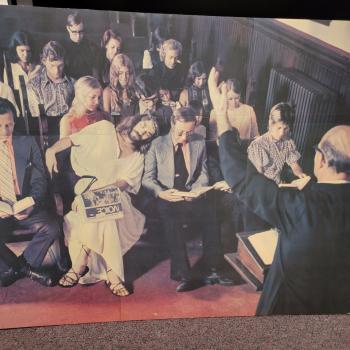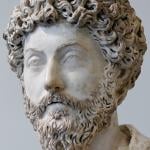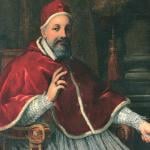Modern Iznik (ancient Nicaea) is a beautiful little city on a lake. It is famous today for being the birthplace of Iznik tiles, a form of beautiful art which was co-opted by Europeans and relabeled Delft tiles. But in 325 A.D. it was the locale Constantine chose to host the first ‘ecumenical’ council of the Christian church with bishops and others coming from all over the Empire, and indeed even from beyond the Empire (Armenia, Persia, even the Crimea). For its day, it was remarkable and would still be if it happened today with all the advances of modern transportation. Most of those attending were pastors, not theologians, and unfortunately much mythology has arisen in regard to the role Constantine actually played in this assembly of clergy, recently exacerbated by Dan Brown’s work of hysterical (as opposed to historical) fiction called The Da Vinci Code. It appears that some 300 persons attended this meeting of the minds of Christianity. The locale for the meeting was chosen based on two considerations: 1) while Constantine had originally favored Ancrya the bishop of Ancrya was virulently anti-Arian, and Constantine thought another locale might be better conducive to a fair hearing on Arianism. We must remember that in fact Eusebius himself had Arian leanings. 2) Nicea was closer to Nicomedia where Constantine had a palace, and he was hoping to invite those at the council to an after-party there— celebrating the 20th year of his reign.
It is clear enough from Eusebius’ report about exactly what happened at Nicaea. First of all the clergy and bishops assembled and were seated. Then Constantine came in with absolutely no body guard or any show of force. The clergy all rose and Constantine then moved to the very end of the row of seats. He did not immediately sit down. Indeed, he waited to be invited by the bishops to sit. Councils had been previously reserved for clergy only, and so of course there was some discussion about what chair the Emperor should occupy at such a meeting— for not only was he not a bishop, he was not even yet baptized! What role would he play in the council? Was it the situation that the bishops would confer, but the Emperor would conclude? This is actually the argument of both Burkhardt and Yoder who say Constantine had the decisive voice and vote on the matter, and they both appear to be historically wrong about this. Did Constantine himself come up with the word ‘homousios’ to settle the debate about whether the Father and the Son shared one divine nature or merely had like divine natures? Here is what Leithart says—- these views are entirely arguments from silence! He puts it this way:
“Burkhardt’s assessment of Constantine’s role at Nicaea– ‘insisting on homousios and cowing the majority into submission– is as unfounded as Carroll’s claims. Both rest on the same evidence which is to say, on nothing!!! Eusebius left us an account of the council, which he attended, but he provided very little information about the course of the debates and motivation of the participants, and certainly no transcript. ” (p. 152). In fact Constantine’s stated view was that “whatever is determined in the holy assemblies of bishops [and by those bishops] is to be regarded as indicative of the Divine Will.” Had it been Constantine’s desire to play a trump card or decide the matter or co-opt the church, what actually happened at Nicaea bears little hint of it. What happened was deep theological debates, which in various cases were surely above Constantine’s pay grade or understanding. And furthermore, as Leithart keeps insisting, Constantine’s goal by the council was the practical one of unifying the church in its belief and praxis, not subsuming the church and turning it into the religious department of the Empire. After all, the church was a separate entity from the State— it had its own officials, its own laws and sacred writings, its own traditions, its own worship life, its own religious instruction none of which was any part of Roman law or Greco-Roman pagan life— whether religious or political. Nor did the church suddenly become a subheading or department of the Roman Empire. It had a life of its own. To judge from what we know from the Donatist crisis, Constantine only intervened in that matter when various church councils had failed to solve the problem and there was still blood-letting going on. Peace and concord was within the provenance of the Emperor, and so he did intervene in that crisis. But Nicaea was nothing like that crisis, and it did not involve blood being left on the lovely Izniks tiles. In Nicaea the council was able to come to a proper conclusion and concordat, though of course a minority ended up being defined as outside of orthodoxy as a result. It would appear that if there was no actual bloodshed, Constantine limited himself to “Facilitating the bishop’s work by calling councils and providing venues and transport. Even his legal recognition of the conciliar decisions was unavoidable. After all, if he granted exemptions to Christian churches and clergy, he needed to know whom he was exempting.” (p. 162).
Did Constantine run the council of Nicaea? In fact the answer is no. Bishop Ossius of Cordoba from the western end of the church ran it. Constantine did give the opening address in Latin, even though he knew Greek and the council was largely Greek speaking. When he spoke in the council his comments seem to be entirely predictable for a ruler— he was urging peace and moderation and resolution of difference, on whatever terms the bishops decided. As for the creed itself, Eusebius credits himself with the first draft of it, but he credits Constantine with the compromise term ‘homousios’. If in fact he suggested such a term, he must have consulted first with Bishops Ossius and Alexander (from the East). And in any case only two bishops out of the 2-300 refused to sign the concordat that involved this creed, and it was only the hard line Arians that found themselves on the outside looking in thereafter. Here, Ramsay MacMullen’s book Voting on God, while fascinating, is at various places unfair and flawed to what was accomplished at Nicaea. Here is where I stress that the notion that Constantine dreamed up or imposed orthodoxy on the church is not supported by the historical evidence, and we need to keep especially clearly in view that it was not until 30 years after Constantine’s death that the church east, west and African agreed that ‘these 27 books and no others’ would be in the NT. Christological orthodoxy Constantine had something to do with. Canonical closing, he did not. In general Constantine was willing to work with team players, and ready to marginalize zealots like Arian that the majority clearly disagreed with.
The real burr under the Yoderian saddle is the wedding of piety to political power. On this model Christians commit the heresy of thinking that the real determiners and bearers of the meaning of history are politicians and governments, not churches, so if the church wants to make a historical difference, it must give the Emperor deference. To the following questions raised by Yoder (and answered yes), Leithart decisively answers no!—- “”Did the church of the 4th century allow itself to be absorbed into the machinery of power? Did the bishops of the 4th century who accomodated themselves to Constantine [in some ways] lose their critical prophetic edge? Did they become yes-men to a brute and tyrant/ Did the church become weightless and invisible?…Yoder to the contrary Constantine did not call himself ‘bishop to bishops’. That was a concept his son Constantius II promoted, and it was roundly condemned by the real bishops.” (pp. 177-78). What Yoder and others seem not to have grasped is that Constantine is not the watershed figure that reveals how Christianity capitulates to Empire. To the contrary, “For many Christians, such as Eusebius, the task of the hour was not to integrate the church into the empire. The empire had lost the battle with the church, and it was the empire that should [and did] make concessions. The church was not incorporated but victorious; the martyr’s faith had been vindicated, and the task now was to integrate the emperor into the church.” (p. 183). In short, Leithart stands Yoder’s argument on its head, shakes it and discovers it has no tangible coins in its pockets. Perhaps one could make some Yoderian complaints about later Christian rulers such as Theodosius II, but not against Constantine. And as for Constantius, Bishop Ossius who advised Constantine himself warned him— “Do not intrude into the affairs of the church, and do not give us advice about these, matters, but rather receive instruction on them from us. God has given you kinship, but has entrusted us with what belongs to the Church” Based on Jesus’ ‘Render unto Caesar’ saying Ossius concludes “neither do we bishops have the right to rule over the world, nor do you emperor, have the right to officiate the church” (p. 186). This hardly sounds like the church clergy becoming mere chaplains and subheadings under the Emperor. The church did not lose its capacity to offer prophetic critique. It simply became more like the situation between a King David and a prophet Nathan or say a King Uzziah and a prophet Isaiah. No one, I suspect would accuse Isaiah of being co-opted by the king just because he was a priest and a court prophet. And nor should the church of the 4th century be accused of being the Emperor’s lap dog.



















